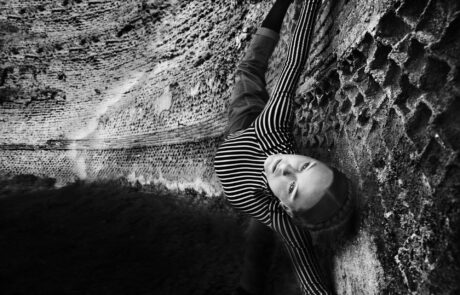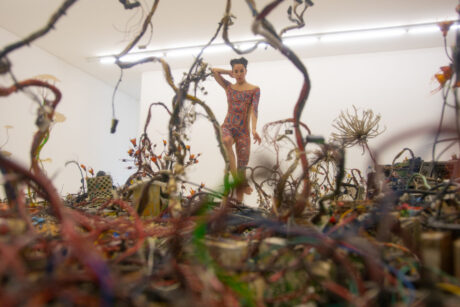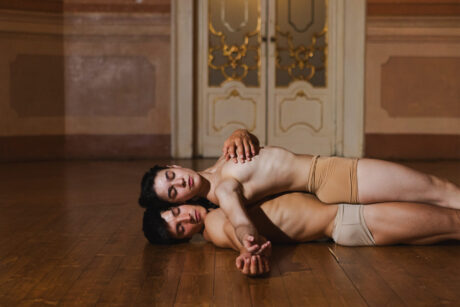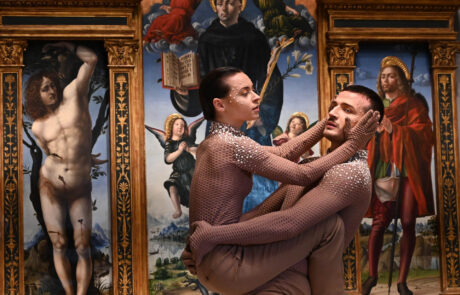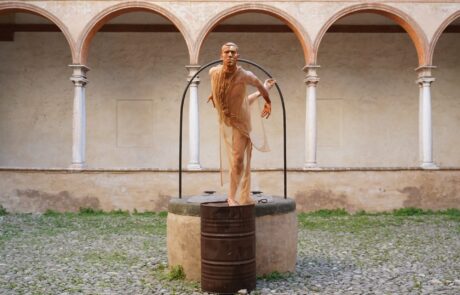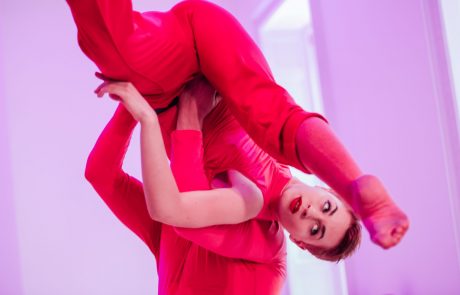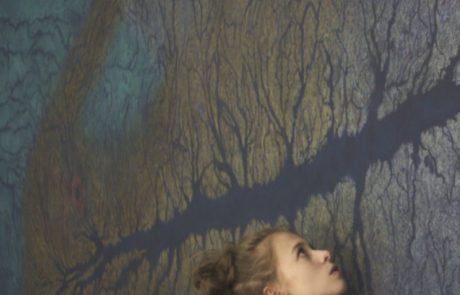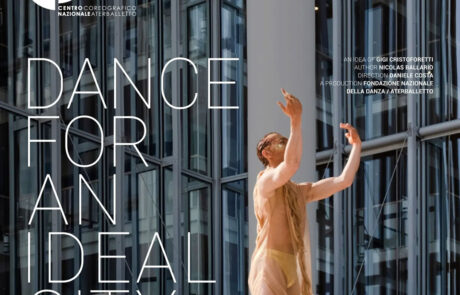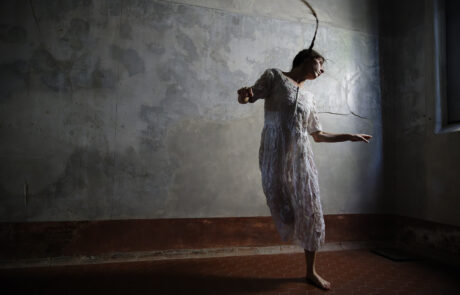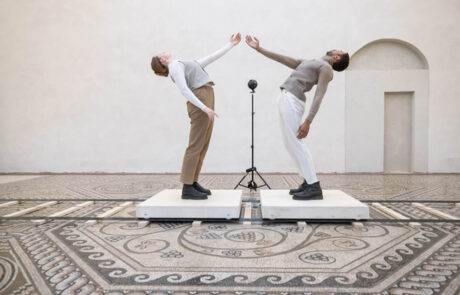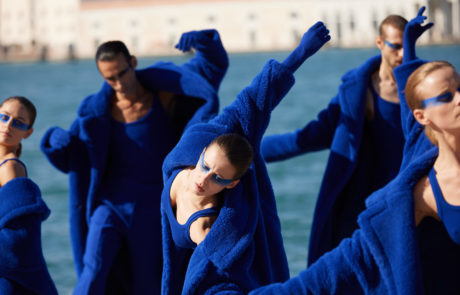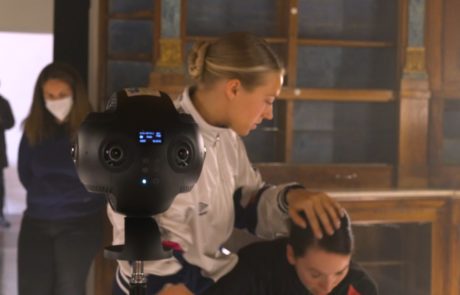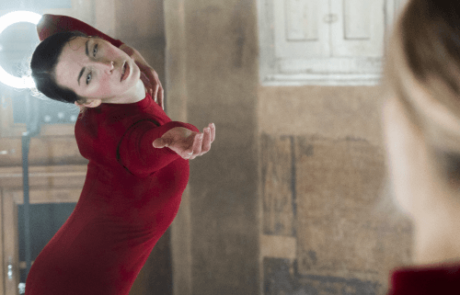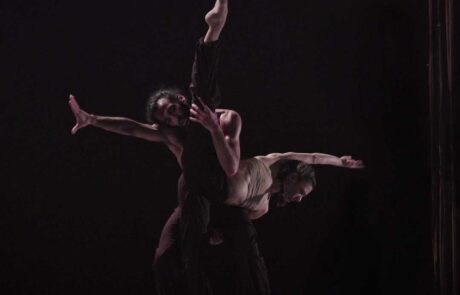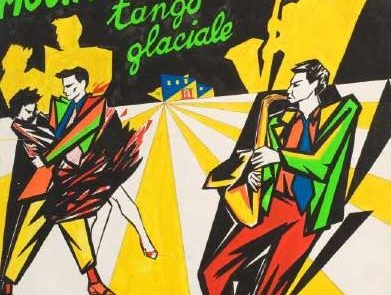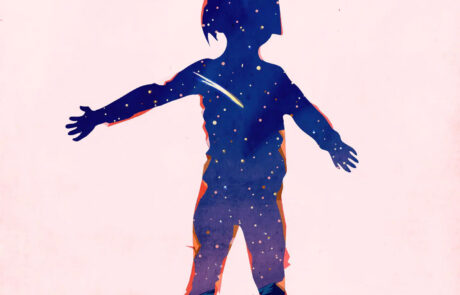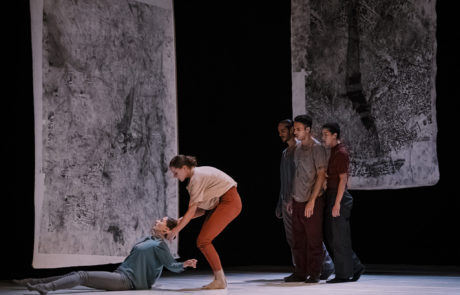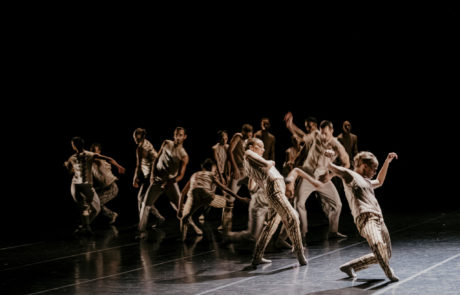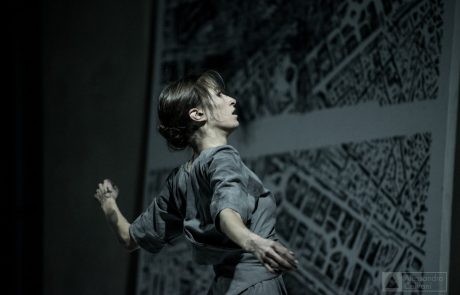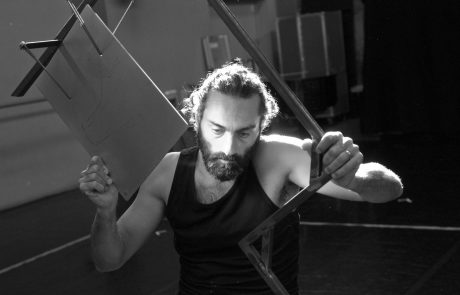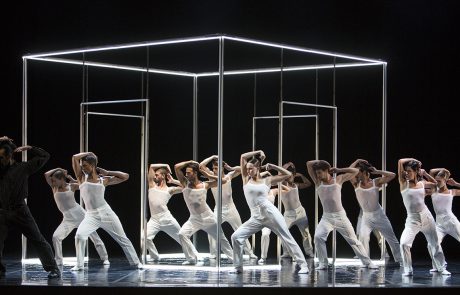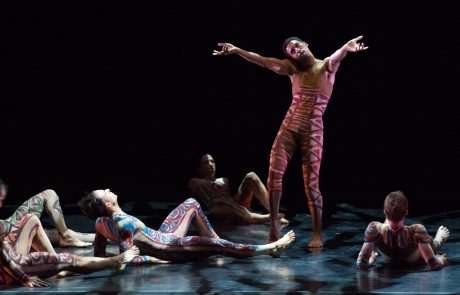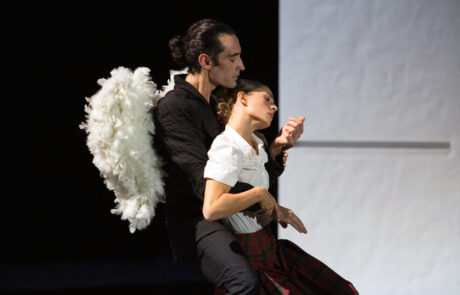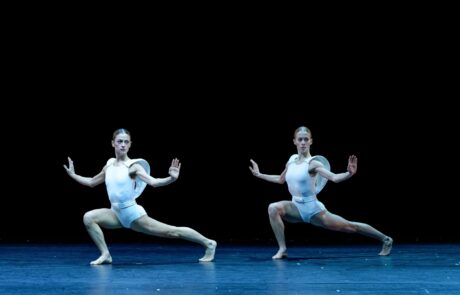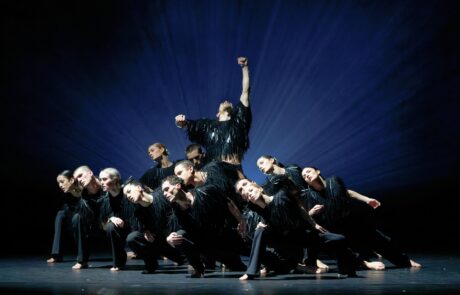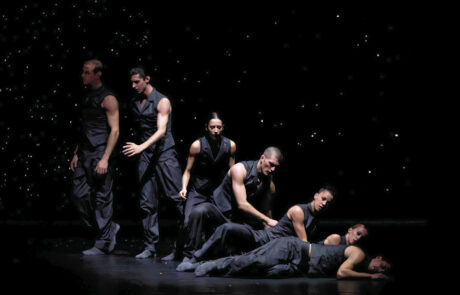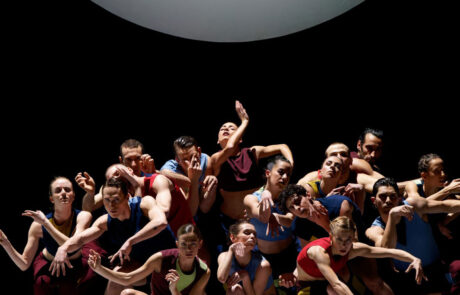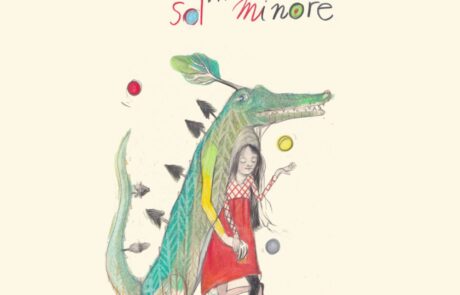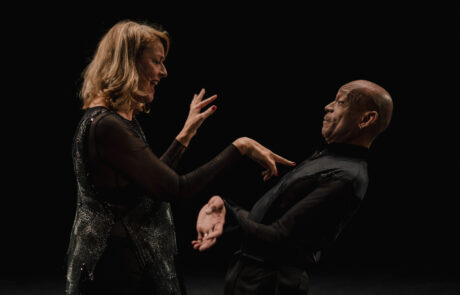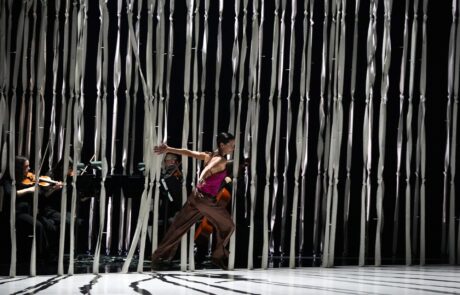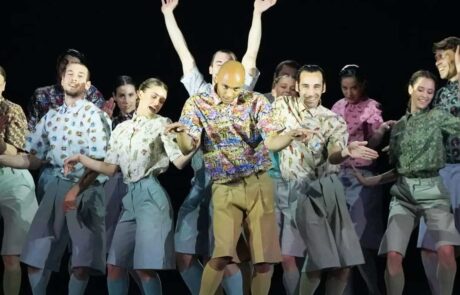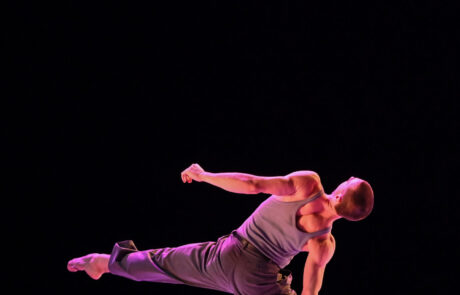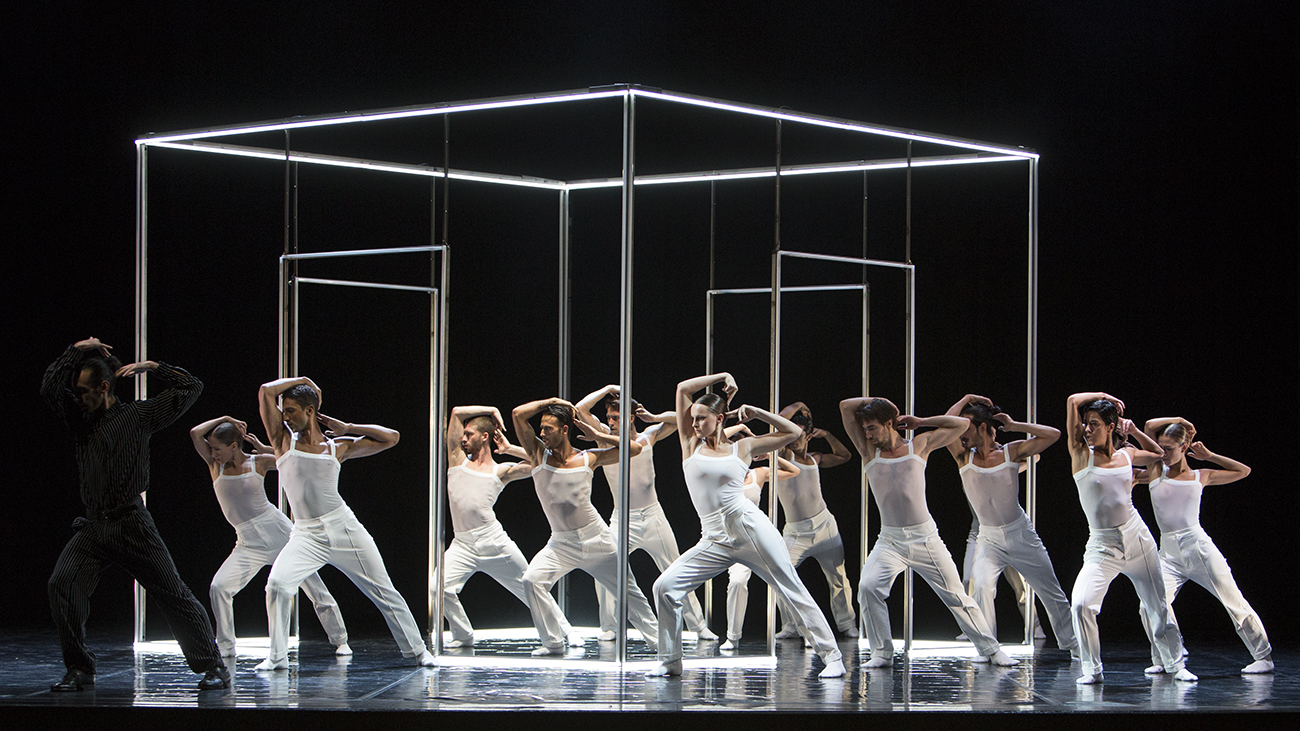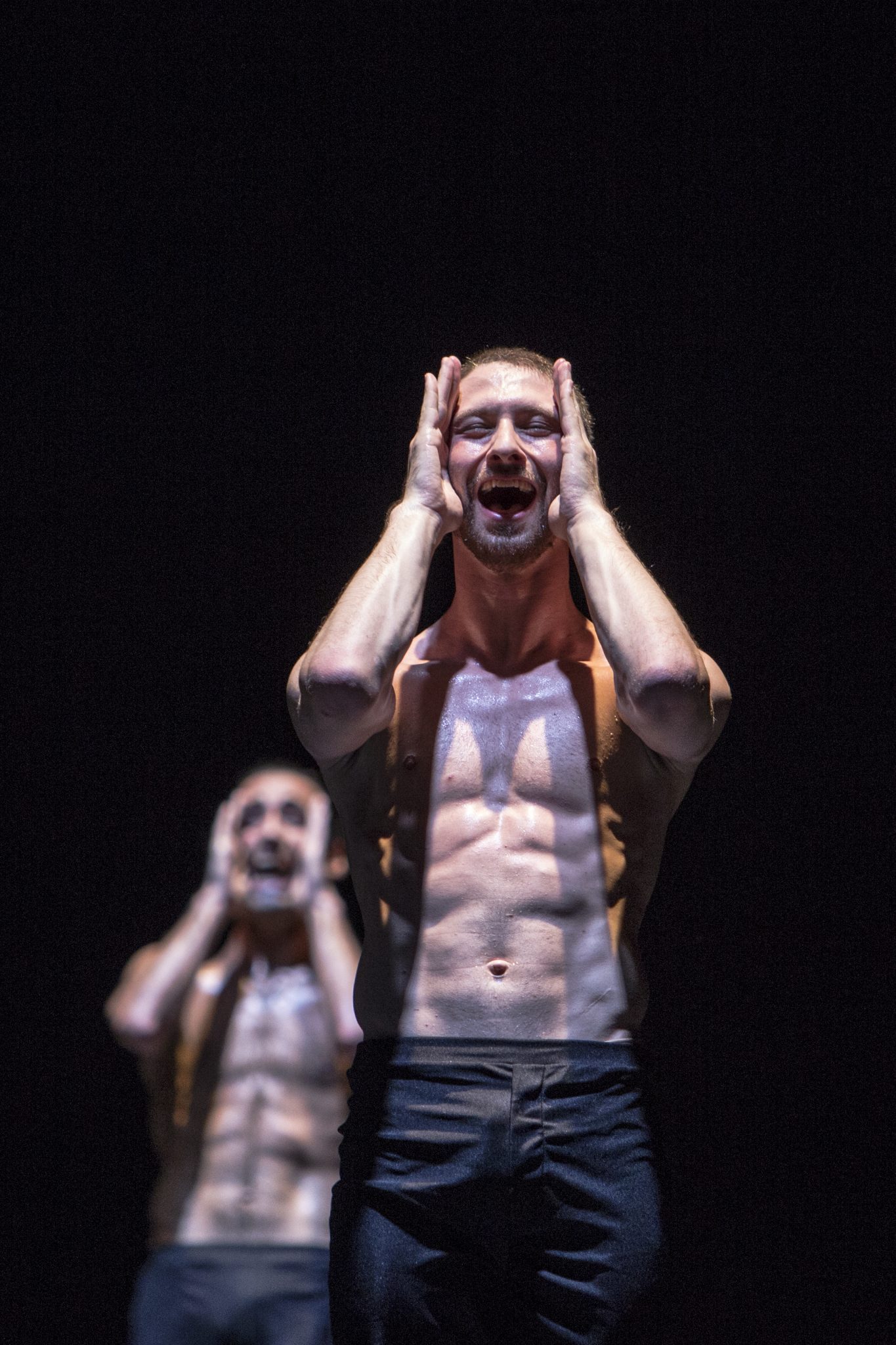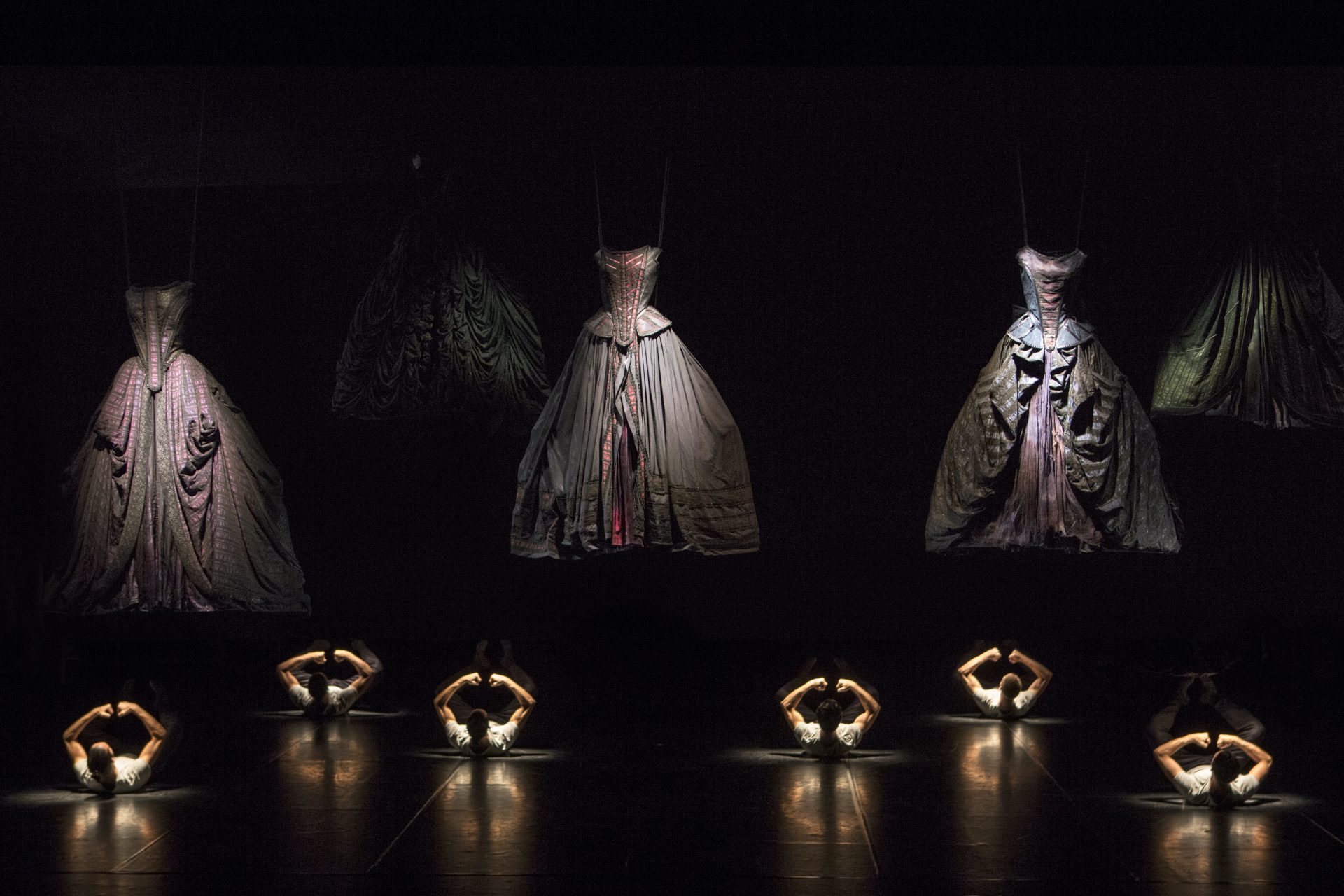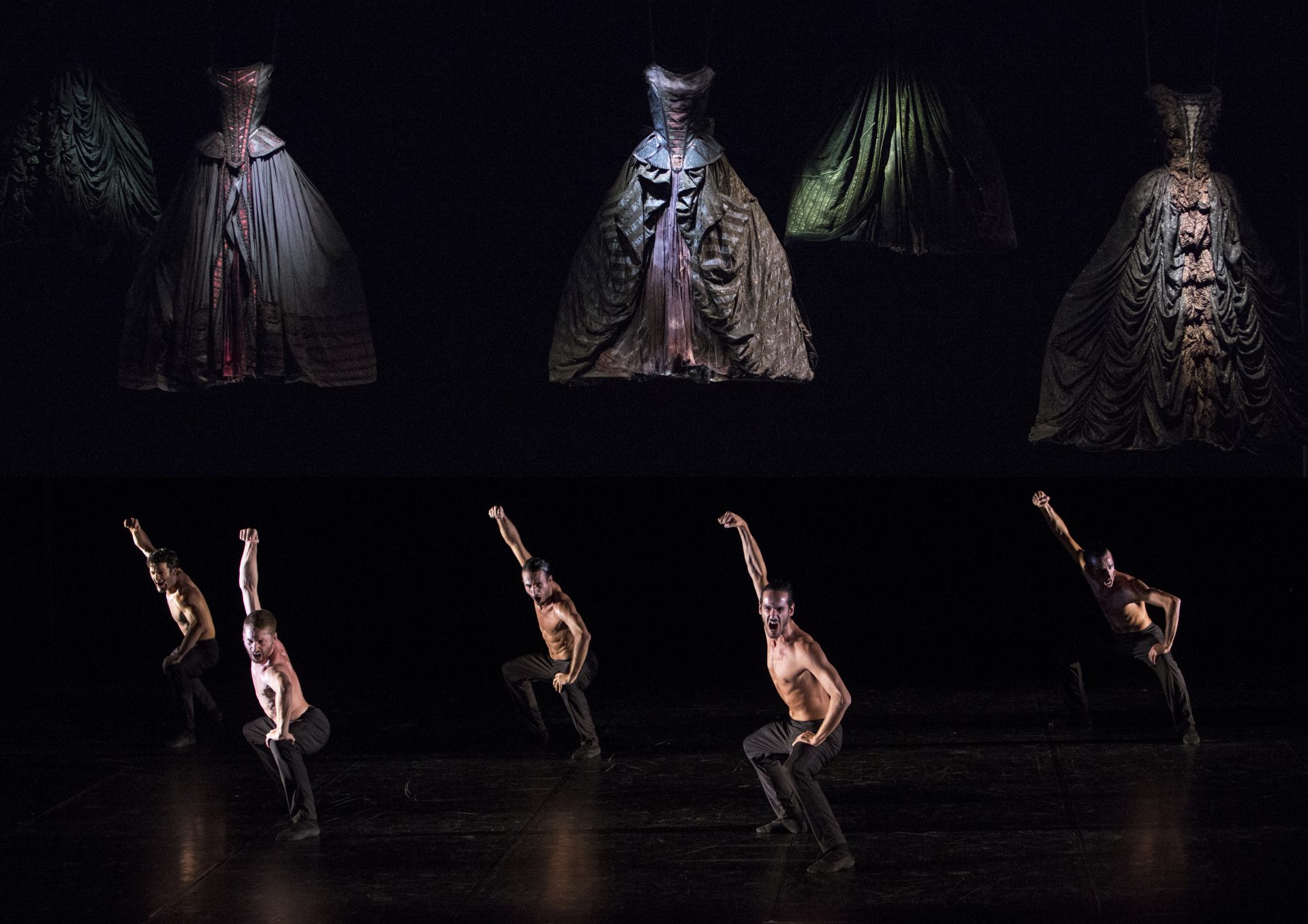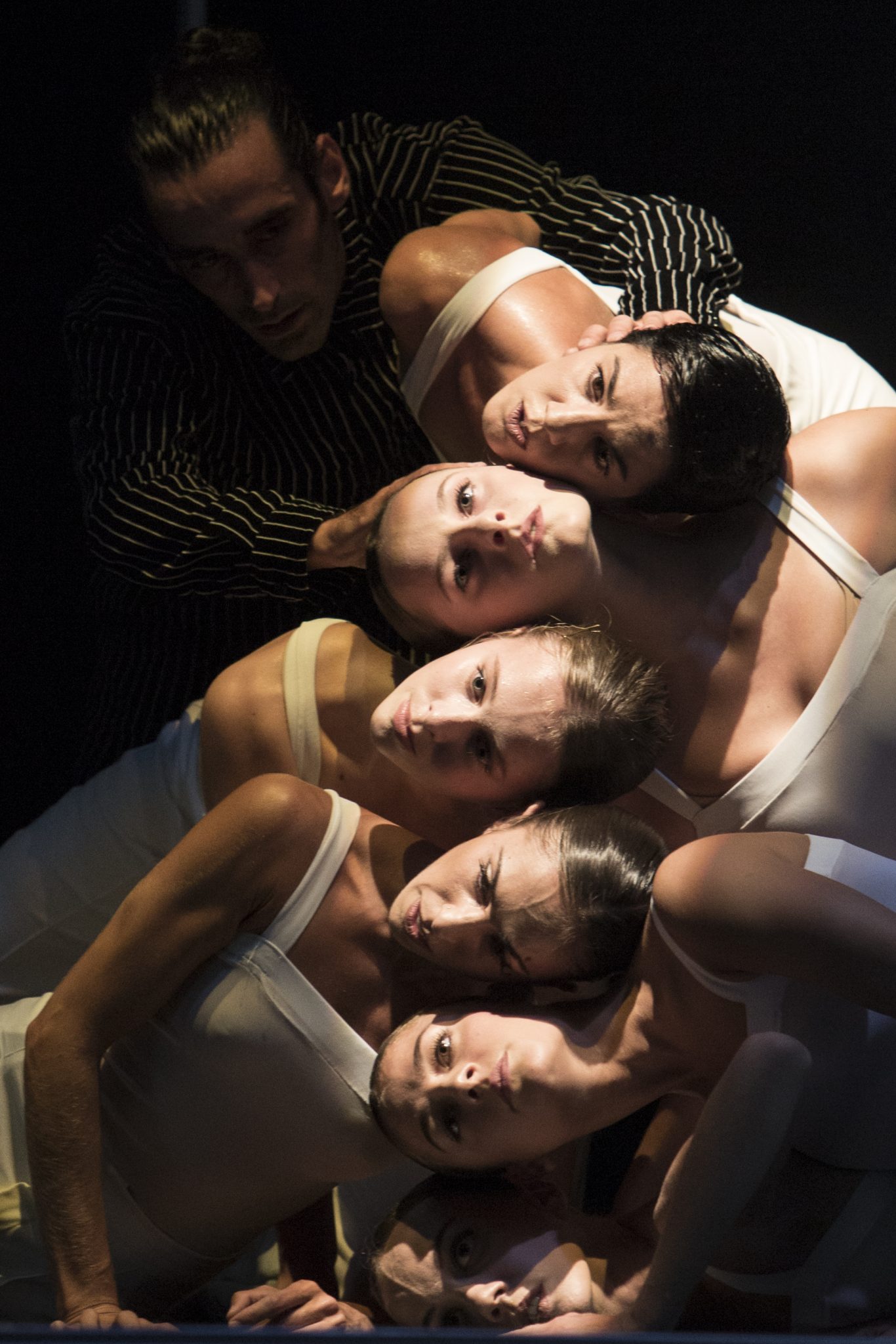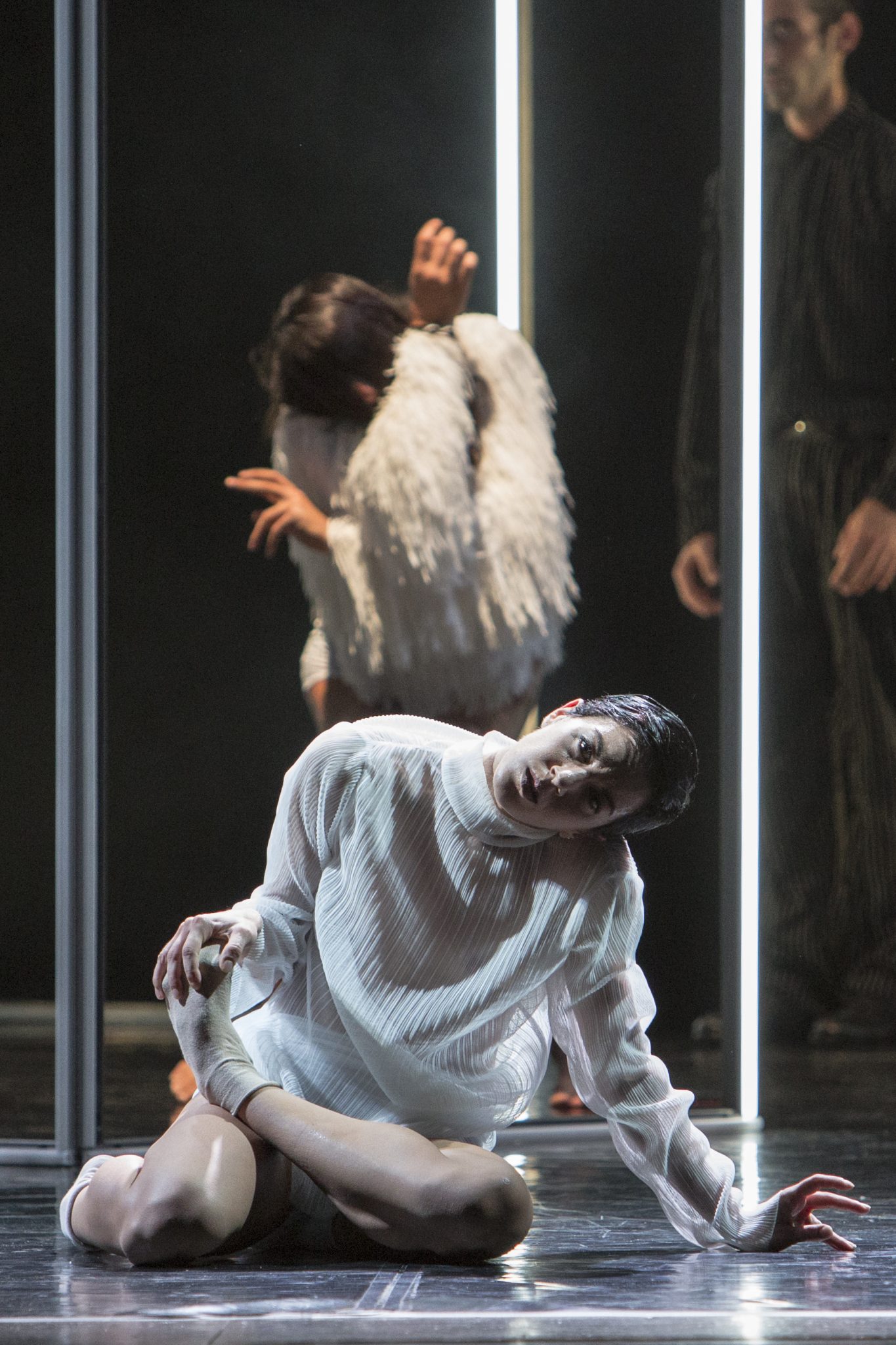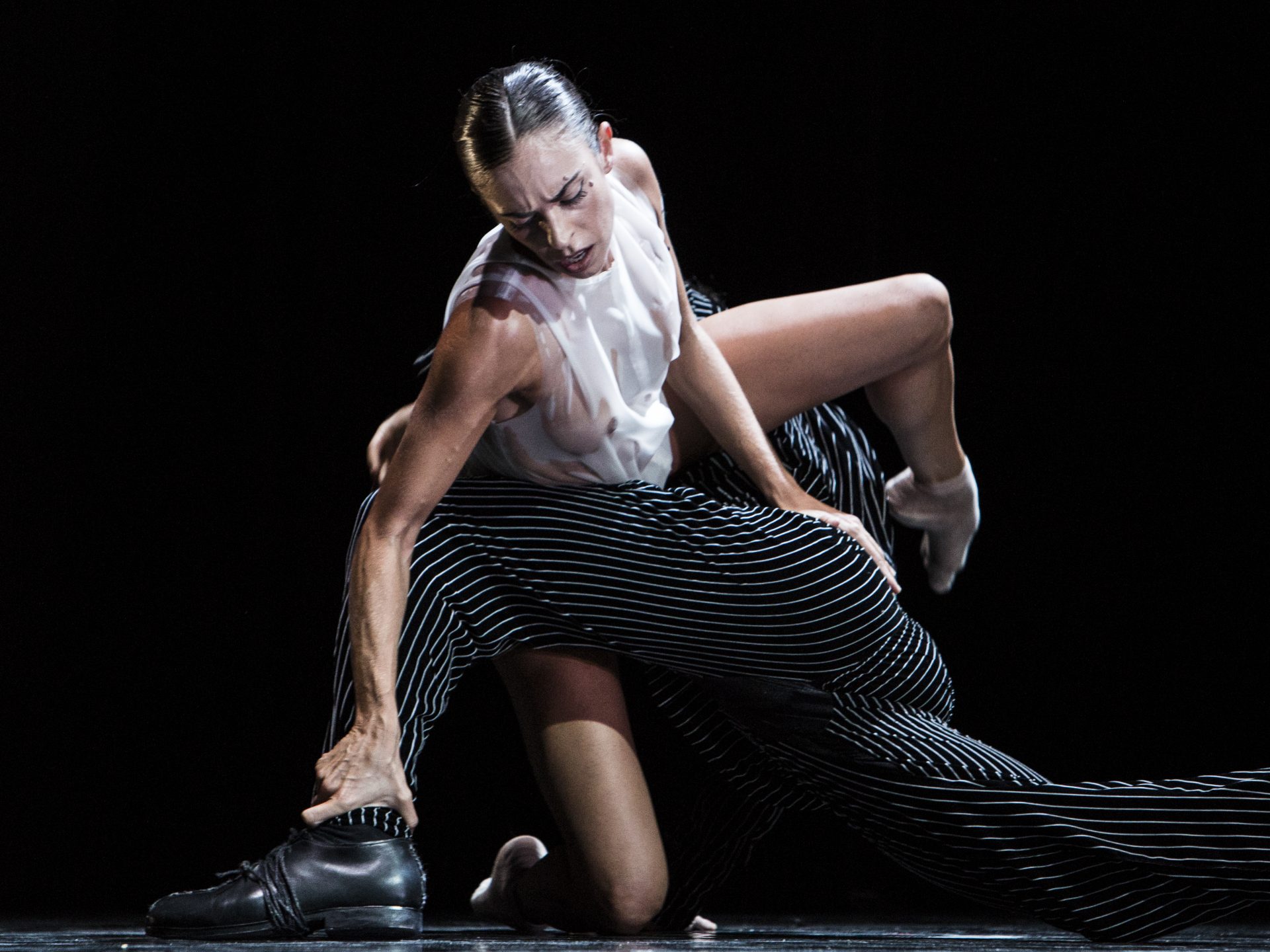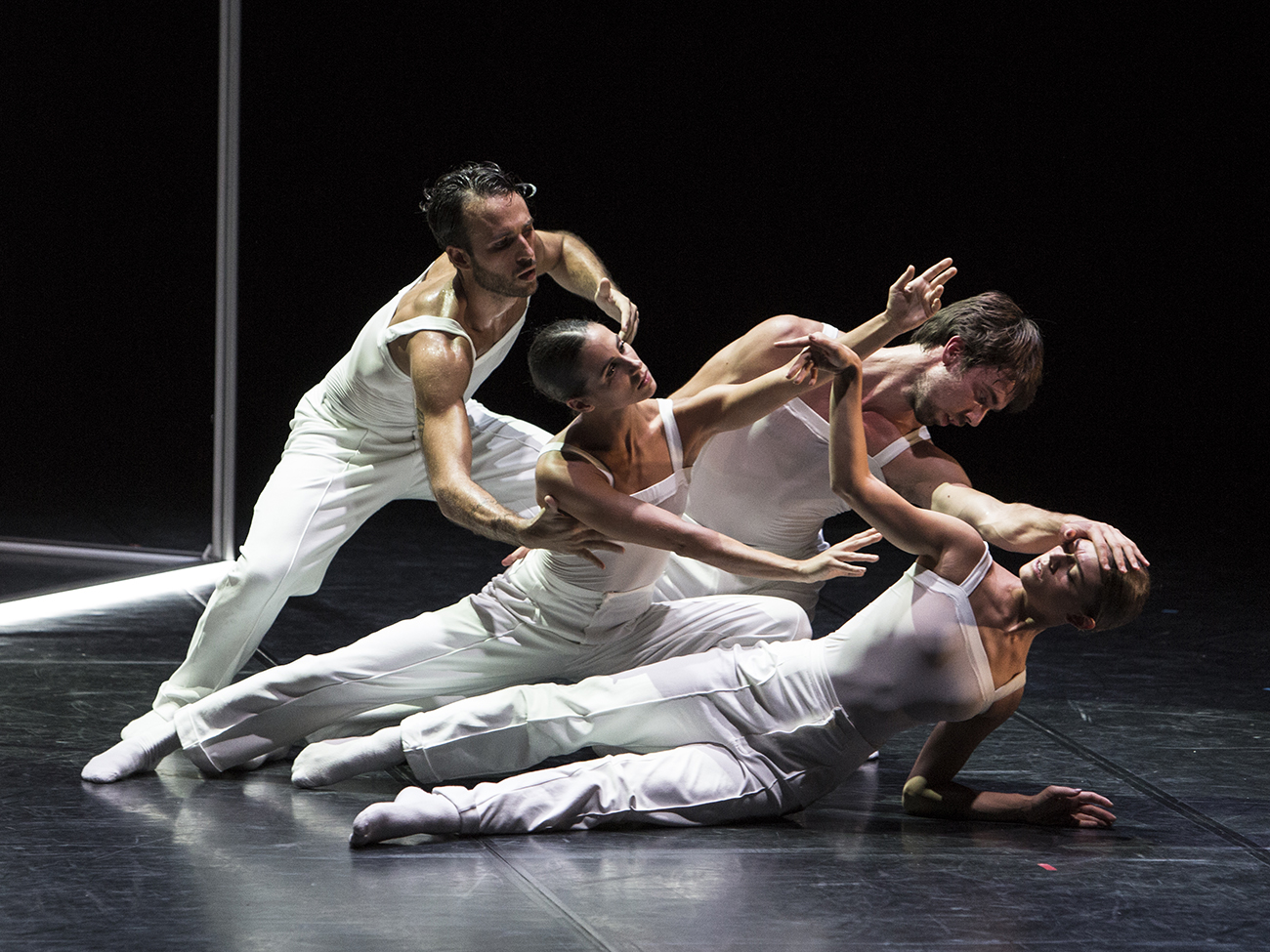Bach Project is an important step in exploring the relationship between dance and music, between classical composition and its contemporary re-creation.
the evening inspired by thr music of Bach is a double bill composed of Sarabande by Jiří Kylián and Domus Aurea by Diego Tortelli.
Sarabande
Choreography Jiří Kylián
Music Johann Sebastian Bach Partita n. 2 in Re minore Sarabande (BWV 1004)
Soundscape implementation Dick Schuttel
Costume design Joke Visser
Set design Jiří Kylián
Lighting design Jiří Kylián (concept), Joop Caboort (realization)
Technical supervision and light adaptation Kees Tjebbes
Creation AT&T Danstheater, Den Haag, September 13th 1990, Nederlands Dans Theater
Duration 19’ – Restaging for 6 dancers
Domus Aurea
Choreography Diego Tortelli
Music Johann Sebastian Bach, Suites Francesi transcribed by Giorgio Colombo Taccani
Performed by Ensemble Sentieri selvaggi
Set design Massimo Uberti
Lighting design Carlo Cerri
Costume design Diego Tortelli made by Francesca Messori and Nuvia Valestri
Duration 40’ – Creation for 16 dancers of the company
Production Fondazione Nazionale della Danza / Aterballetto
Coproduction Torinodanza Festival / Teatro Stabile di Torino–Teatro Nazionale, MITO SettembreMusica, Les Halles de Schaerbeek – Bruxelles, Fondazione per la Cultura Torino, Fondazione I Pomeriggi Musicali e MILANoLTRE Festival
In partnership with Fondazione Teatri di Piacenza, Fondazione Teatro Regio di Parma, Fondazione I Teatri di Reggio Emilia, Fondazione Teatro Comunale di Modena, Fondazione Teatro Comunale di Ferrara, Fondazione Ravenna Manifestazioni
With the support of Città di Carpi
Thanks to Fondazione I Teatri Reggio Emilia Costume Department for costume realization of Sarabande
WORLD PREMIERES
Turin, Teatro Carignano, September 14th and 15th 2018
Milan, Teatro Elfo Puccini, Septmeber 17th 2018
On the background of Bach’s Sarabande, Jiří Kylián is continuing his search for basic answers to a basic question of children: ‘Why?…’
Simple structures, banal situations, visions of dreamlike episodes, flashbacks, fractured motorics of dance and pantomime; they all are ingredients of this choreographic ‘cookery’ and ensure that the question will never be answered.
Kylián has conceived Sarabande – like a number of his later works – as “a venture by means of choreography“. It is fundamentally related to No More Play, Falling Angels, and Sweet Dreams – as a black and white sketch to be completed and coloured in the mind and fantasy of the observer. And, although their starting point is of clear intellectual nature, the result itself is determined by emotional energies.
Bach’s music, with its perfect structure and divine vision, is not interpreted – does not need any interpretation.
As for this ballet, the contrast between music and dancing / sounds provides a voluptuous playground for human relations and instincts.
Diego Tortelli, a young artist involved in all-encompassing research that leads him to reinterpret the classics or recreate the world of historical figures, to offer his skills in creating abstract dance and visionary images, based on his mastery of movement, to the 16 Aterballetto dancers.
An extraordinary dancer who is still greatly in demand amongst international companies, Tortelli is now orientated towards a career as a choreographer and the Fondazione Nazionale della Danza is going to accompany him for an entire season. Domus Aurea is a work based on juxtapositions.
Bach’s genial composition is respectfully reinterpreted by Colombo Taccani, who pays respect and homage to it, but also has the same spirit of invention. The desire to underline the importance of music in inspiring movement has led to considering a live performance, thanks to the Sentieri selvaggi ensemble and the partnership, for this important production, of Torinodanza festival and Teatro Stabile di Torino – Teatro Nazionale, as well as Festival Mito, MILANoLTRE Festival and the European partner Les Halles de Schaerbeek – Bruxelles. In addition the six theatres of tradition of Region Emilia-Romagna.
The search for perfection and emotion in Tortelli’s choreography is accompanied by the geometric effect onstage by visual artist Massimo Uberti. Perfect lines drawn by neon lights create the home of the dancers. A Domus Aurea – a perfect home, indeed.
Domus is the intimate space in every individual that contains a wealth of stories made up of images and echoes. Perhaps we do not recognise them, but we can be affected by them, if we leave the gateways of the soul open to ‘listen’ not only to the music, but also to the visual suggestions.
Domus Aurea thus becomes a space that is created through continually interweaving the rational and irrational. This is the condition within each of us: a continual precarious balance between certainty and uncertainty, inspired by the desire for change and by utopia to at least fleetingly achieve perfection and freedom, which today perhaps only belong to art.
In Massimo Uberti’s works, right in the middle of a choice of removing distance light becomes the core matter – the work itself. The space is only light and without obstacles can become infinity. The work Domus Aurea is a luminous design of an ideal house within an Ideal City.
Domus Aurea is like a thin line that outlines a just mentioned volume.
Luminous energy is a source of life and Uberti reinforces it in this role in the art world.
In his research light does not only have the task of revealing the work, but also that of making it a material apparition, of holding it together in its conceptual coherency, offering it to the visitor as a passage outside the void.
And it is not a question of technique or artifice, but instead of a natural tendency to walk on the edge, to measure each step, to experience vertigo as a real emotion, in his case the virtual character of the luminous phenomenon in its evanescence and physical essence.
My score relates to the French Suites by harking back to the principle of construction/deconstruction behind Diego Tortelli‘s choreographic project.
A local trajectory, similar to the one presented by the entire work, is created in the six islands found along the pathway, each of which has been constructed predominantly on elements taken from a single piece of the Suites: an opening narrows down the original substance to a very restricted number of elements (individual voices, only the harmonic content, the trimmed lines of the links and ornamentations and so on) to gradually reconstruct the Bach-like image in view of its subsequent deconstruction and, at times, its disintegration. Each ever-changing revision does not, however, aim to profoundly and aggressively transform the musical essence and turn Bach into a distant, unrecognisable inspiration, but rather to respectfully reveal hidden, secret aspects of these pages.
The use of electronics gives unity to the pathway, by creating a sort of acoustic setting, which deliberately lacks in naturalistic suggestions of easily identifiable, recurring figuration. It becomes autonomous as it was at the beginning, at times joined by fluctuating, Bach-like apparitions (only in the final sarabande does it step aside, after occupying the acoustic space with its most important, tense intervention), at others matched with fleeting interventions improvised by the instruments in the parts linking one island with the next.
Giorgio Colombo Taccani
